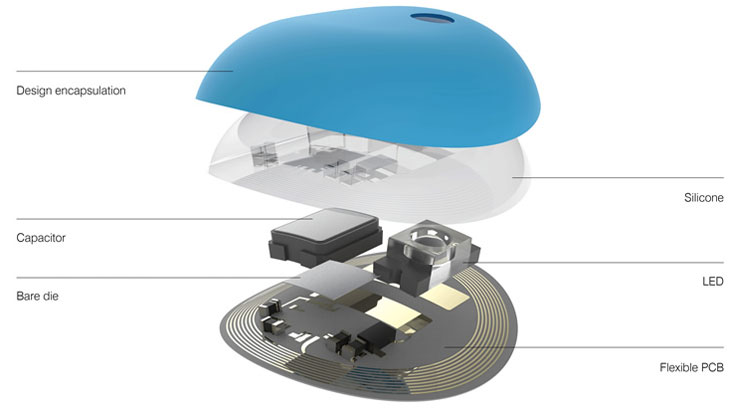UV nail sensor helps protect you from skin cancer
One of the hardest aspects of sunbathing is knowing when you've had too much UV (ultraviolet) exposure and remembering when to apply your next layer of sun cream. Experts at L'Oréal developed its first commercial sunscreen product in 1935, then furthered its 80-year commitment to sun safety with the unveiling of UV Sense, the first battery-free wearable electronic UV sensor at this year's Consumer Electronics Show.
L’Oréal has long been dedicated to sun safety through research, product innovation, and public education campaigns, as well as funding significant research with the Melanoma Research Alliance to prevent certain skin cancers.
In 2016, La Roche-Posay, L’Oréal’s dermatological skincare brand, launched the first-ever stretchable skin sensor to monitor UV exposure, My UV Patch. Since the technology’s debut, La Roche-Posay has distributed more than one million patches to consumers in 37 countries free of charge.
Consumer studies show that My UV Patch had a positive impact on the sun safety behaviors of consumers - with 34% applying sunscreen more often and 37% trying to stay in the shade more frequently.
To further encourage consumers to change their sun safety behaviors, the new UV Sense is smaller, and offers longer wear and real time data. The first battery-free wearable electronic sensor to measure individual UV exposure, UV Sense can store up to three months of data and show trends of exposure over time with instant updates.
The new wearable is less than 2mm thick, 9mm in diameter and designed to be worn on the thumbnail. By putting this technology on the thumbnail - which receives optimal sunlight - consumers can increase wear time from several days with My UV Patch to several weeks with UV Sense. The sensor can be reapplied to the nail with additional adhesives, which come in the packaging.
UV Sense has an accompanying mobile app, available on both iOS and Android, which translates and transfers data from the sensor using Near Field Communication (NFC) enabled technology. The app delivers consumer-friendly information detailing when the wearer should be mindful of UV exposure.
Data is included in a profile within the app that outlines a user’s exposure levels. Sun-safety habits - like spending time in the shade or reapplying sunscreen - are encouraged with facts about sun exposure and additional tips for protection.
 Image Credit: L'Oreal
Image Credit: L'Oreal
“The technology within UV Sense is groundbreaking and has so much potential to impact the future of technology and wearables,” said Guive Balooch, Global Vice President of L’Oréal’s Research and Innovation Technology Incubator.
“Armed with research and consumer insights from the original My UV Patch, we set out to create something that blends problem-solving technology with humancentered design, offering real time data and longer wear in a discreet product that fits any lifestyle.”
For the design of UV Sense, L’Oréal has collaborated with world-renowned designer Yves Behar. “Design and technology are inextricably linked, and as products become more personalised to individuals, both elements are integral to providing people with seamless experiences,” said Yves Behar, Designer Entrepreneur and Founder of fuseproject.
“By working with L’Oréal, we are able to pair deep expertise in beauty tech with an effective design that enhances consumers’ wellbeing without distracting from their everyday lives.”
Both UV Sense and My UV Patch draw from research L’Oréal conducted in conjunction with MC10, wearable technology company, and professor John Rogers at Northwestern University, through his portfolio of intellectual property (IP) and innovation around flexible, stretchable electronics.
UV Sense will be available on a limited basis in the US for the 2018 summer season with a global launch following in 2019. In 2018, La Roche-Posay will also make available a new limited-edition of the My UV Patch designed by Yves Behar.


